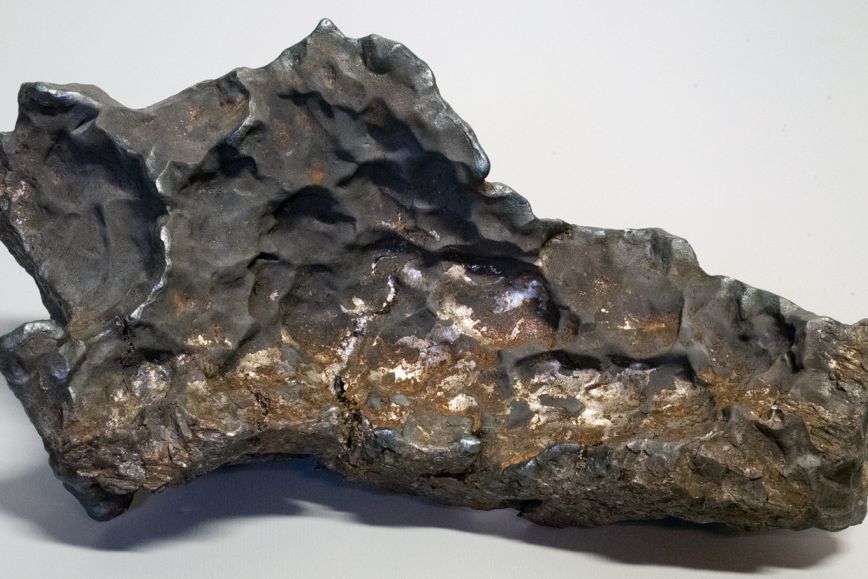Iron meteorites are rarely encountered, constituting a mere 2% of all classified meteorites. Believed to be fragments of molten metallic cores within disrupted planetesimals, these rare meteorites provide invaluable insight into the earliest stages of our solar system's formation.
“An excellent opportunity for research occurred when a bright fireball, mainly observed by the Finnish Fireball Network, on November 7, 2020, over Sweden, produced the first iron meteorite with a possibility to derive its pre-atmospheric trajectory. This provided us a unique chance to study the delivery mechanism of iron meteorites and to look for iron-rich reservoirs in the Solar System”, says Jaakko Visuri, analyst of Finnish Fireball Network, Ursa Astronomical Association.
This unique opportunity was not missed by a team of Ukrainian astronomers led by Prof. Irina Belskaya, who started in 2020 the project devoted to metal-rich asteroids, the parent bodies of iron meteorites, funded by the National Research Foundation of Ukraine.
The cooperation of Ukrainian and Finnish scientists made it possible to reconstruct the cosmic history of the iron meteorite.
“For the very first time, this discovery presents a documented trajectory of an iron meteoroid, showcasing a record-breaking fireball descent at a mere 11.4 km above the Earth's surface and unraveling also the celestial pathways it traversed before gracing our planet. This achievement not only provides insights into the remarkable journey it endured, but also contributes to our understanding of the origins and dynamics of iron-rich space objects, thereby deepening our insight into the broader Solar System”, says Maria Gritsevich, senior researcher at the Finnish Geospatial Research Institute.
Valuable knowledge for numerous applications, including planetary defence
The determination of the iron meteorite's orbit and origin has far-reaching implications in various scientific realms and practical applications, including celestial mechanics, space exploration, planetary defense, and the broader understanding of the universe.
The information extracted from the meteoroid's journey provides clues about the conditions, processes, and mechanisms that led to the formation and subsequent dispersion of celestial bodies deepening the understanding of the Solar System Evolution.
The calculation of the meteorite's orbit contributes to our understanding of celestial mechanics, allowing scientists to probe the interactions between different celestial bodies, gravitational forces, and resonances. This knowledge enhances the ability to predict the paths of other objects in space, including near-Earth asteroids, comets, and meteoroid streams.
Space Exploration and Resource Utilization can also benefit from knowledge about meteorite origins, expanding our understanding of the distribution of resources within the solar system. This information could be invaluable for future space missions, such as mining asteroids for valuable minerals or resources. Understanding the origins of iron meteorites could aid in identifying potential resource-rich targets.
This discovery serves as a stepping stone for interdisciplinary investigations that could reshape our understanding of space, celestial mechanics, planetary formation, and the broader cosmic narrative.
The study is a part of the 4 years Planetary Spectrometry project supported by the Academy of Finland and led jointly by the University of Helsinki and the Finnish Geospatial Research Institute FGI. Space geodesy is an integral part of the research at the department of Geodesy and Geodynamics at FGI, that utilizes modern observing techniques, develops computational methods, and engages in interpretation of data about objects in space.
More information
Jaakko Visuri, Analyst of Finnish Fireball Network, Ursa Astronomical Association
+358 40 129 1056, Jaakko.visuri@ursa.fi
Maria Gritsevich, Adj. Prof. Ph.D. Senior Research Scientist, FGI +358 50 301 6441 maria.gritsevich@helsinki.fi
Irina Belskaya, Prof. V.N. Karazin Kharkiv National University, Ukraine, ibelskaya@karazin.ua
The scientific article: The Astrophysical Journal


